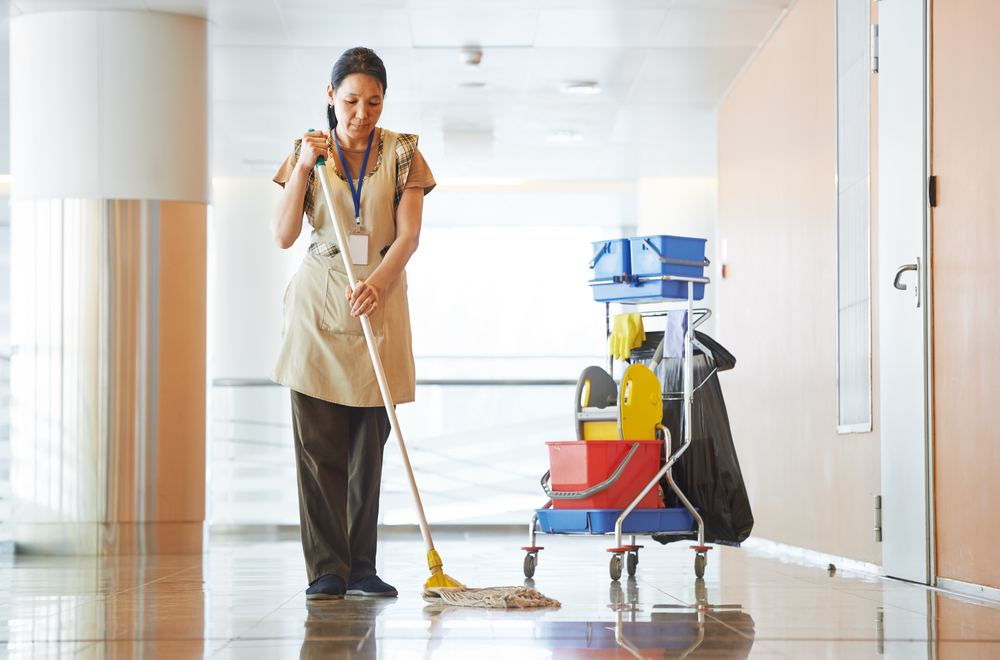Best Practices for Cleaning Crews During COVID-19

With some 4.4 million janitorial and domestic workers working to flatten the curve of COVID-19, there’s no doubt these individuals are at the front lines of the pandemic. Work has not paused for many cleaning crews, who must still upkeep essential facilities like healthcare buildings, assisted living centers, grocery stores, or other such establishments.
Fortunately, there is a way for custodial workers and cleaning crews to keep themselves protected from contracting the virus, while also maintaining those cleaning routines that protect others.
Using the proper products
There are specific disinfectants that cleaners can use to combat COVID-19 on surfaces. A multi-purpose Pledge spray likely won’t do the trick, but the Environmental Protection Agency suggests that some Clorox and Lysol disinfecting wipes and cleaners might do the trick.
Note that there is no guarantee such products will entirely kill the pathogen, but they’re a step in the right direction. And, when in doubt, a bleach and water mixture can be just as effective for tackling surfaces.
This kind of enveloped virus is hardy and stubborn, so using cleaning agents that are equally so can be beneficial. The EPA has even released a list of disinfectants to use against SARS- CoV-2.
Wearing the right attire
Cleaning crews should wear rubber gloves to protect their hands against these occasionally harsh disinfectants and from any pathogens that may reside on surfaces.
Additionally, it’s important to protect clothes with the right attire for commercial and residential cleaning. This includes wearing cleaning smocks over clothes that can be easily removed and placed in the wash between cleaning jobs. If you are unable to change your clothes immediately after cleaning, having this additional protective layer is essential.
Washing all materials
Infectious disease experts hypothesize that the virus can be viable on clothing and fabrics for anywhere between hours and days. While the answer is not clear-cut, one thing is for certain: Washing your smock (and other attire) after each cleaning job is critical.
Make sure to use the hot water setting and a detergent that contains a bleach compound. Some extra time in the dryer also wouldn’t hurt, as it allows the droplets to dry out and could deactivate the virus, according to public health specialist Carl Winner.
Do the same for cleaning rags that you use, and consider also disinfecting mop handles, bucket handles, etc.
Advanced protocol
Especially in impacted facilities like hospitals, clinics, and emergency rooms, cleaning crews need to be equipped with additional protective equipment, like N95 masks. Many commercial buildings that have had confirmed cases of Coronavirus will even bring in professional crews with electrostatic sprayers.
No matter the facility these cleaning crews are protecting, they’re the oft-forgotten front line warriors during the COVID-19 crisis and must be properly equipped and informed by employers of advanced disinfecting practices.
Investing in a button-up, full-coverage smock with long sleeves is one part of the equation, but proper Personal Protective Equipment (PPE) and deep-cleaning practices are also part of it. Recognizing, preparing, and thanking these workers for providing this deeply essential service in times of contagion certainly will go a long way.





